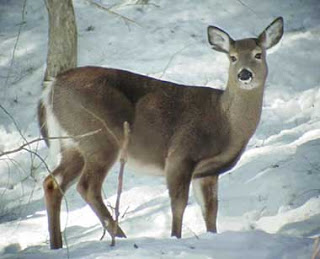MADISON – This year marks the 10th anniversary of Wisconsin’s Venison Donation Program. In 10 years the program distributed over 3.1 million pounds of ground venison from nearly 70,000 deer donated by hunters, processed by participating meat processors and distributed by volunteers to state food pantries.
“Wisconsin's venison donation program is an important effort that provides high quality food to Wisconsin families in need,” Department of Natural Resources Secretary Matt Frank said. “This program has been very popular. I encourage hunters to continue this charitable effort by bagging a deer for food pantries.”
Wisconsin’s Venison Donation Program is a partnership between local charitable organizations, counties, the Department of Natural Resources, meat processors and hunters. This effort has provided high quality protein to thousands of families over the years. In addition to donating deer to the program, since 2002 hunters have chipped in an additional $123,000 to the pantry program on top of the fee they pay for deer harvest permits.
A list of participating meat processors, available on the DNR Web site and searchable by county, is growing daily.
Rules of the program are simple. Hunters harvest, tag, field dress and register a deer same as they always have. After registration the hunter can drop off the carcass at a participating processor. There is no cost to the hunter other than transporting the carcass. Hunters are advised to call ahead to a processor to check on business hours and if the processor currently has space to accept the carcass.
Hunting Down Hunger
New this year is a program run by the Green Bay Packers called “Hunting Down Hunger.” Anyone who has been to a Packer game or watched the Pack on TV is familiar with the “sea of orange” and camouflage in the stands. Now hunters can wear their favorite team’s logo and their favorite fall colors by purchasing a baseball cap in orange or orange camo or a stocking hat in orange, all with the Packer logo. Five dollars from every hat purchase will be donated to hunger relief in Wisconsin. [huntingdownhunger.com [exit DNR] ].
“Through the combination of two traditional Wisconsin pastimes, the Packers and hunting, we’re hopeful fans will take aim at hunger in this very unique way,” said Packers President/CEO Mark Murphy.
FOR MORE INFORMATION CONTACT: Laurie Fike (608) 267-7974 or Bob Manwell (608) 264-9248






